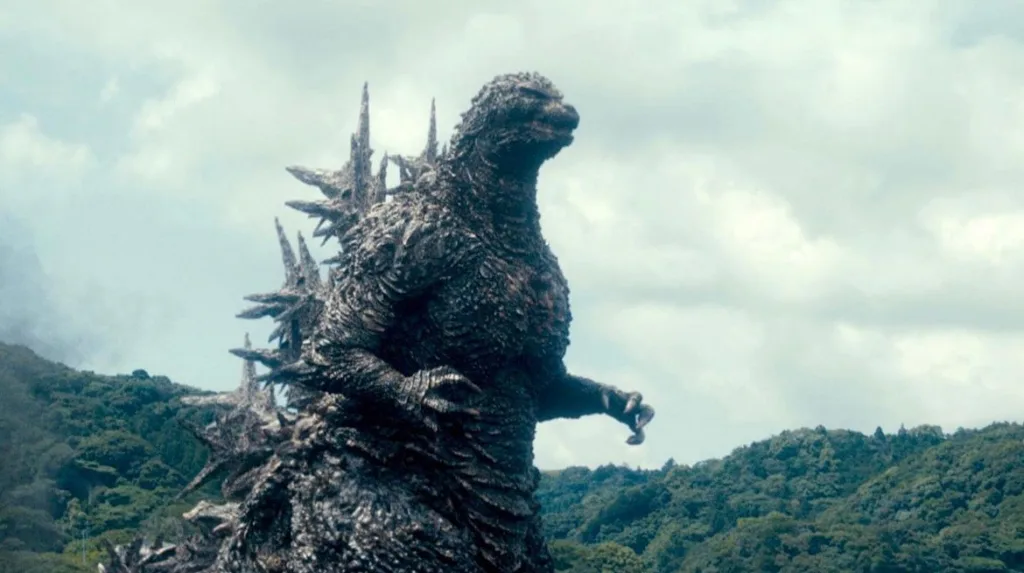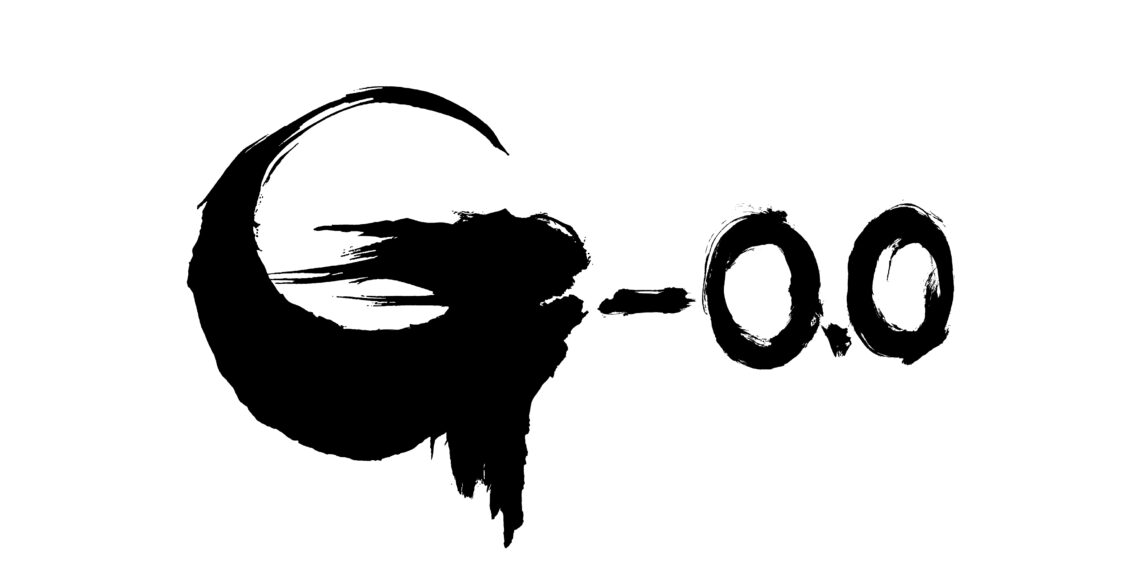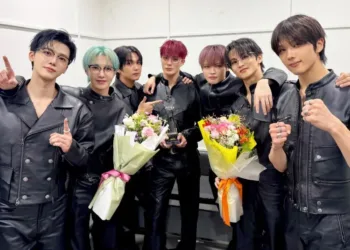The King of Monsters is officially returning to terrorize audiences worldwide as Toho Studios has unveiled the first teaser for “Godzilla Minus Zero,” the highly anticipated sequel to 2023’s Academy Award-winning “Godzilla Minus One.” The announcement came during the annual Godzilla Day 2025 celebration in Tokyo, marking exactly 71 years since the iconic kaiju first stomped onto screens in 1954.
Director Takashi Yamazaki, who wrote, directed, and supervised visual effects for the groundbreaking predecessor, returns to helm this ambitious follow-up that promises to expand upon the emotional depth and visual spectacle that made “Minus One” a global phenomenon.
Table of Contents
The Official First Teaser: A Masterclass in Minimalism
The inaugural teaser for Godzilla Minus Zero embodies the same minimalist approach that made its predecessor so effective. Rather than overwhelming viewers with monster mayhem, the brief announcement video focuses on a dramatic title reveal that transforms from “-1.0” to “-0.0” against an ominous black background, accompanied by haunting sound design that suggests impending destruction.
| Godzilla Minus Zero – Key Production Details | Information |
|---|---|
| Director/Writer/VFX Supervisor | Takashi Yamazaki |
| Production Companies | Toho Studios, ROBOT Communications |
| VFX Studio | Shirogumi (Oscar-winning team) |
| Expected Release Window | Late 2026 |
| Production Locations | New Zealand, Norway |
| Franchise Position | 31st Japanese Godzilla film |
The teaser’s power lies in its restraint. As the mathematical notation shifts from negative one to zero, viewers hear what sounds like massive destruction—a trademark Godzilla roar mixed with the rumble of collapsing infrastructure. This sonic landscape immediately establishes that while the title suggests a movement toward neutrality, the threat remains monumentally dangerous.
Yamazaki’s Hand-Drawn Logo: Art Meets Monster
One of the most intriguing aspects of the announcement is the reveal that Takashi Yamazaki personally designed and drew the new logo for Godzilla Minus Zero. The artistic choice reflects the director’s hands-on approach to every aspect of the production, from conceptual design to final visual effects.
The logo features a distinctive interpretation of the letter “G” that has sparked considerable fan speculation. Some observers note its resemblance to a praying figure, while others see draconic or serpentine qualities that could hint at Godzilla’s evolving form. The stark black-and-white aesthetic maintains visual continuity with “Minus One” while suggesting a darker, more mature thematic direction.
Building on Oscar-Winning Success
Godzilla Minus One achieved what many thought impossible: it became the first Godzilla film in the franchise’s 70-year history to win an Academy Award, taking home the Oscar for Best Visual Effects. More importantly, it proved that audiences worldwide hunger for monster movies that prioritize character development and emotional stakes over pure spectacle.
Commercial and Critical Triumph:
| Achievement Category | Godzilla Minus One Results |
|---|---|
| Worldwide Box Office | $116 million |
| Production Budget | $15 million |
| Academy Awards | Best Visual Effects (Winner) |
| Japan Box Office Rank | Highest-grossing live-action film of 2023 |
| U.S. Performance | Third highest-grossing non-English film |
| Total Awards | 50+ international and domestic honors |
The film’s success stemmed from Yamazaki’s decision to ground the kaiju action in post-war Japanese trauma, creating a narrative that resonated with contemporary audiences dealing with their own societal challenges. This approach distinguished it from both previous Japanese Godzilla films and the American MonsterVerse productions.
The Mystery of “Minus Zero”
The title “Godzilla Minus Zero” immediately raises questions about its thematic significance. While Yamazaki explained that “Minus One” represented Japan at its lowest point after World War II, the movement to “Zero” suggests either a reset, a new beginning, or perhaps an even more dire situation than previously imagined.

Industry insiders describe the sequel as being positioned “not just as a sequel but as a statement piece,” indicating that Yamazaki intends to push both the artistic and commercial boundaries established by its predecessor. The mathematical progression from -1.0 to -0.0 could represent humanity’s attempt to return to neutral ground, only to discover that zero itself represents a new kind of threat.
Production Expansion: Global Scale
Unlike the relatively modest production footprint of “Godzilla Minus One,” which was filmed primarily in Japan, “Minus Zero” will expand internationally with significant filming planned in New Zealand and Norway. This geographic expansion suggests a larger scope for the story while maintaining the intimate character focus that distinguished the original.
The involvement of these specific locations hints at potential plot elements. New Zealand’s diverse landscapes and advanced film infrastructure make it ideal for large-scale action sequences, while Norway’s dramatic coastal geography could provide settings for oceanic encounters with the regenerated Godzilla.
Shirogumi Returns: Visual Effects Excellence
The announcement confirms that Shirogumi, Yamazaki’s visual effects company responsible for the Oscar-winning effects of “Minus One,” will return for the sequel. This continuity ensures that the groundbreaking blend of practical effects, miniatures, and computer graphics that made the original so visually compelling will evolve rather than be replaced.
Shirogumi’s approach to Godzilla emphasized weight and physical presence over flashy digital spectacle. Their creature design made every movement feel consequential, every footstep earth-shaking, and every atomic breath genuinely terrifying. The studio’s return suggests that “Minus Zero” will build upon these techniques rather than abandoning them for more conventional blockbuster approaches.
Fan Reaction and Social Media Explosion
The teaser’s release during Godzilla Day 2025 created an immediate social media phenomenon. Within hours of the announcement, #GodzillaMinusZero began trending on X (formerly Twitter), accumulating over 2 million views and thousands of fan reactions. The response highlighted the global appetite for Yamazaki’s distinctive approach to the franchise.
Fan comments praised the return to “emotional realism” and the promise of continued focus on human drama alongside monster action. Many noted the contrast with recent Western kaiju films, with one viral tweet stating: “Hollywood gives us monsters; Japan gives us meaning.”
The Legacy of Minus One’s Ending
The original film’s conclusion provides crucial context for understanding “Minus Zero’s” potential direction. “Minus One” ended with apparent victory over Godzilla, but a final shot revealed regenerating flesh from the monster, while protagonist Noriko displayed mysterious marks on her neck that suggested ongoing mutation or infection.

These story threads create multiple narrative possibilities for the sequel. The regenerating Godzilla tissue could evolve into a new form of the creature, while Noriko’s condition might represent humanity’s literal transformation in response to kaiju influence. The movement from “Minus One” to “Zero” could represent this evolution from pure destruction to something more complex and potentially symbiotic.
Positioning Against the MonsterVerse
Toho’s decision to continue with Yamazaki rather than collaborate with Legendary Pictures’ MonsterVerse represents a clear artistic choice. While Legendary’s films prioritize spectacle and monster battles, Yamazaki’s approach emphasizes psychological depth and cultural specificity.
This separation allows “Minus Zero” to maintain the grounded tone and cultural authenticity that made its predecessor so distinctive. Rather than competing directly with Hollywood’s approach to kaiju cinema, Toho is establishing a parallel track that prioritizes artistic vision over commercial formulas.
Release Timeline and Expectations
Industry reports suggest that “Godzilla Minus Zero” is targeting a late 2026 global release window, with production beginning later in 2025. This timeline allows adequate development of the complex visual effects that will be crucial to the film’s success while building anticipation among the global fanbase established by its predecessor.
The 2026 release date would position the film perfectly to celebrate Godzilla’s ongoing cultural impact while allowing Yamazaki sufficient time to craft a worthy successor to his Oscar-winning achievement. Given the elevated expectations following “Minus One’s” success, rushing the production would be counterproductive to maintaining the franchise’s newfound artistic credibility.
Global Cultural Impact
The success of “Godzilla Minus One” demonstrated that international audiences are hungry for cinema that combines spectacular entertainment with emotional depth and cultural authenticity. “Minus Zero” represents an opportunity to build upon this foundation while expanding the thematic scope of contemporary kaiju cinema.
The film’s development comes at a time when Japanese cinema is experiencing renewed global recognition, from anime features winning major awards to live-action films achieving international success. “Minus Zero” positions itself at the forefront of this cultural movement, potentially establishing new standards for how franchise filmmaking can balance commercial appeal with artistic integrity.
The teaser for “Godzilla Minus Zero” promises a continuation of Yamazaki’s revolutionary approach to the kaiju genre, combining intimate human drama with spectacular monster action. As the first glimpse of this ambitious sequel, it successfully establishes anticipation while maintaining the mystery that made its predecessor so compelling.

With its Oscar-winning creative team returning and production expanding to international locations, “Godzilla Minus Zero” appears positioned to build upon the foundation established by “Minus One” while pushing the boundaries of what kaiju cinema can achieve. The movement from negative one to zero suggests not an ending, but a new beginning for both the characters and the franchise itself.
Read More: Shah Rukh Khan Leads Bollywood Legends as Netflix Strikes Historic Deal with Yash Raj Films
FAQs
What does the first teaser for Godzilla Minus Zero reveal about the plot?
The official first teaser focuses primarily on the title reveal, transforming from “-1.0” to “-0.0” against a dark background with ominous sound design. While it doesn’t reveal plot details, the audio suggests large-scale destruction and the title progression hints at a thematic evolution from the original film’s concept.
When will Godzilla Minus Zero be released in theaters?
According to industry reports, Godzilla Minus Zero is targeting a late 2026 global release window. Production is expected to begin later in 2025, with filming planned in New Zealand and Norway alongside Japan, allowing adequate time for the complex visual effects work.
Is Takashi Yamazaki returning for the Godzilla Minus Zero sequel?
Yes, Takashi Yamazaki returns as writer, director, and visual effects supervisor for Godzilla Minus Zero. He also personally designed and drew the new logo. His VFX company Shirogumi, which won the Oscar for Best Visual Effects for Minus One, will handle the sequel’s effects.
How does Godzilla Minus Zero connect to Godzilla Minus One?
While officially described as a follow-up, the exact relationship remains unclear. The title progression from “-1.0” to “-0.0” suggests thematic continuity, and the original film’s ending—showing regenerating Godzilla tissue and Noriko’s mysterious marks—provides setup for potential story continuation.
Will Godzilla Minus Zero be part of the MonsterVerse or remain separate?
Godzilla Minus Zero will remain separate from Legendary Pictures’ MonsterVerse. Toho is keeping this film purely within the Japanese cinematic universe, ensuring it maintains the grounded tone and cultural authenticity that distinguished Minus One from Hollywood kaiju films.








